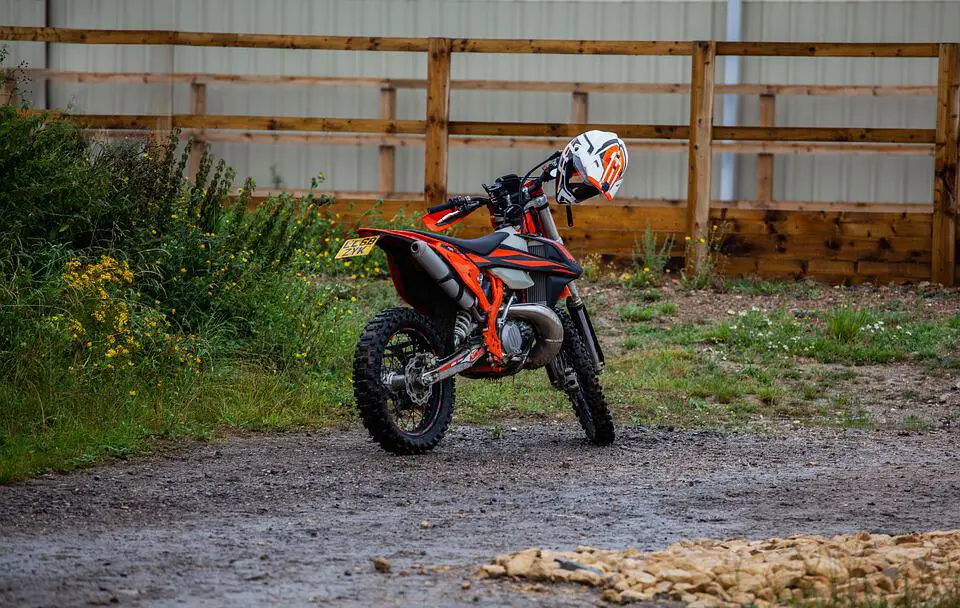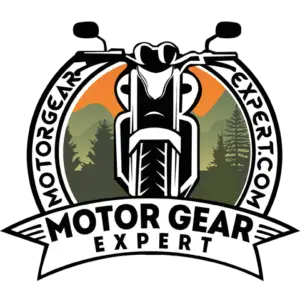I’m not much of a dirt bike guy. Mainly because I don’t have a dirt bike, but I was planning to get a dual-sport to try out how much fun I could have off road. We don’t have a lot of dirt tracks where I’m from so I’d have to ride on the road a lot if I were to get on the dirt. That got me thinking; if I’m going to be wearing a dirt helmet, will it be as safe on the road as a full-face helmet?
Are all helmets the same?
Yes, and no. Helmets are all designed to mitigate the force of an impact. They’re designed to manage impacts so that as little force as possible ends up on the rider’s head. But not all helmets are created the same and aren’t equally as safe as each other. A full-face helmet is not as safe as a dual-sport helmet, which is not as safe as a dirt bike helmet.
Different types of helmets are designed for different levels of safety because they’re designed to work in a specific set of instances. Full-face helmets, for example, are sleek and aerodynamic for the least drag. They’re also sleek so that, if you crash, there won’t be any protruding parts that could snag to bumps or debris on the road.
Dirt helmets, on the other hand, have big openings designed to accommodate goggles. They also have protruding chins to protect riders from getting their jaws from getting smashed on the handlebars. The protruding chin and big opening also mean a lot of air gets in to cool the rider when riding slowly off-road. Dirt helmets also have huge sun peaks to shield riders from sun glare. Since dirt helmets don’t have visors, they have a sun peak to shield their eyes from UV rays and heat.
Dirt helmets for on-road riding?
Unless you carried your motorcycle on a pickup or a van and drove it to the dirt track, chances are you had to ride to your destination. That would mean wearing a dirt helmet on the road. Are they good for road travel?
Not exactly. Dirt helmets are designed for slower speeds and are built for lots of bumps. They don’t do very well under high speeds with all the big protruding parts getting caught in the wind. Dirt helmets are everything but aerodynamic so if you’re planning to ride faster than 60 – 70 kph on the road with a dirt helmet, it’ll be like having a sail on your head.
If you get into an accident on the road with a dirt helmet, the sun peak or chin bar could snag on something and cause your head and neck to twist! This might do the opposite of what helmets are designed to do.

Full-face helmets all the way?
So maybe you’ll just wear a full-face helmet on and off the road. That’ll solve everything. Well, not exactly. Though full-face helmets are considered by many to be the best and safest helmets for riding on the streets, they’re not optimized for riding off-road.
First, full-face helmets are heavier than dirt helmets. They’re constructed with durable materials and usually have two or more layers of foam for maximum impact mitigation. You’ll be doing a lot of head-turning in the dirt and riding off-road is an aerobic activity. It’ll be hot and very physical so keeping your head light and cool will be preferred.
And second, full-face helmets are relatively hotter than dirt helmets. Yes, full-face helmets have vents to keep the air flowing, but these vents are designed to work effectively at a higher speed. Nothing beats the cooling factor of a dirt helmet with a big wide opening for goggles and a big chin bar for maximum airflow.
Riding with either a dirt helmet or a full-face helmet is not the best way to go if you’re planning to ride on the dirt and on the street. So what’s the best way to go? Get something in between!
Dual-sport helmets: best of both worlds
A dual-sport helmet’s magic is in its name, “dual sport”. It can do great on the road and off, hence, it’s good for two sports, dual-sports! Dual-sport helmets are what one would think of if a full-face helmet and a dirt helmet were to have a child. They have features of a street helmet and a dirt helmet. Not only that but they also highly modifiable and adaptable to the riding style you choose.
A dual-sport still has a sun peak and a noticeable chin bar but it isn’t as pronounced as a dirt helmet. Dual-sports are also highly modifiable. The sun peak and visor can actually be taken off. If you want an aerodynamic street helmet, take off the sun peak. If you want an airy dirt helmet, put the peak back on and take out the visor in favor of goggles, voila! You wouldn’t want mudslinging onto your helmet visor but if they do, you could just as easily clean them.
My personal weapon of choice is HJC’s DS-X1 dual-sport helmet (Amazon). Since I started using it, it became my favorite. I use this thing almost every day. I don’t go too fast on the streets anyway so I don’t remove the sun peak. It’s incredibly light too, making head checks a breeze.
It also flows a ton of air, keeping me cool in traffic jams. The liner is also actually pretty comfortable. It’s anti-bacterial and moisture-wicking, and completely washable and removable. It’s also pinlock ready and the sun peak is adjustable.
Dual-sport helmets are the way to go if you love the dirt as much as you love the pavement. I love multipurpose things so the ease of having two helmets in one makes dual-sports helmets very attractive to me. That’s just a personal opinion, though. But seriously, if you plan on riding to dirt tracks or going on an adventure requiring you to ride both on and off road, get yourself a dual-sport helmet.
